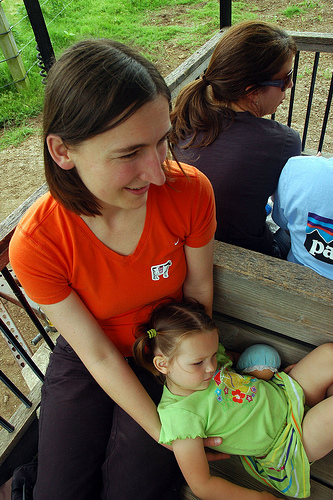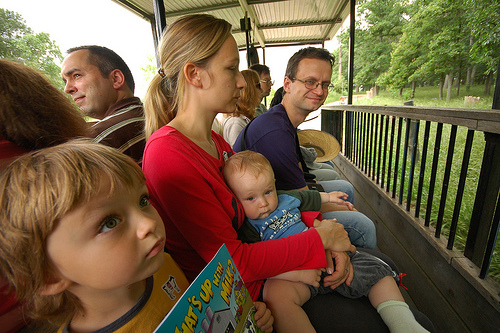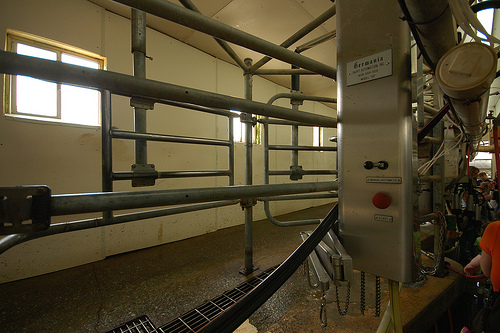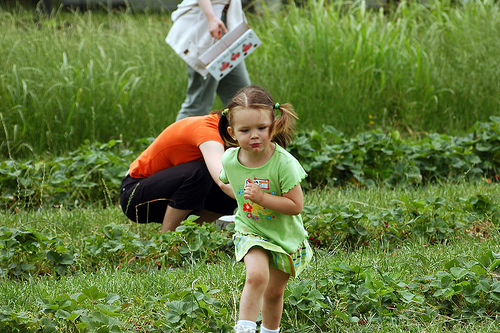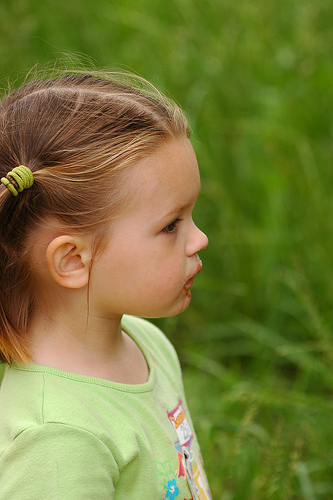Growing up, I drank milk my mother purchased from a small farm about fifteen miles from our home in Virginia. When I went with my mother, I often got a “tour” from Mrs. Campbell. Chickens, cows, a horse or two. The cows wandered about the pasture, grazing and lazing all day long. They moved slowly and seemed totally relaxed.
For a suburbanite like me, it was heaven.
Then there was the milk: always thick and delicious. Vigorous shaking was prerequisite to pouring. And a taste that was radically different from the nonsense I drank in school.
When we stopped our milk runs and turned to store-bought milk, I was initially disappointed with the taste but eventually grew used to it. Trying to remember that taste was like trying to remember an odor: it lingered in the mind just long enough to taunt me with the realization that I can’t truly remember it at all.
I’ve had the opportunity to taste that milk again, here.
It turns out, there’s a local dairy farm and creamery that runs on the same principles: no hormones or antibiotics; free-range grazing; stress-free, healthy living.
Further, it turns out they give tours.
We arrived just after twelve, stepped out of our car and suddenly felt we were back in K’s home village. The odor of a farm is international, and strangely warm and heartening.
The farm is Trantham’s Twelve Aprils, and the tour convinced me of one thing: buy their milk or no one else’s. No growth hormones, no antibiotics, no stress, grass-fed — pretty much what I grew up on.
K had heard about the tours, so she arranged a few families to get together for a tour and some strawberry picking afterward.
Sitting in a trailer behind a tractor being dragged all around a farm doesn’t seem like it would be terribly enjoyable, but learning about simple but revolutionary grazing techniques and the resulting product was, in fact, almost a blast. L was entertained by the simple fact of being pulled by a tractor. Having a farm coloring book helped as well.
The milk is available only in South Carolina, but given the small size of the operation (they have, if memory serves, eighty milking cows right now) relative to the size of the output is fairly stunning.
After the tour, we got a chance to sample the milk. They have three products: buttermilk, regular, whole milk, and chocolate milk. I’ve never, in my life, been a fan of buttermilk, but theirs was delicious.
“Mega-dairies add things to their buttermilk to sour it,” the guide/farmer explained. “The result is a strongly acidic taste. Ours doesn’t have that.”
She was certainly right.
Finally, it was time for strawberry picking. “You might not find much after the school kids we had coming through here this week,” the owner’s daughter said.
L helped by serving as a quality assurance specialist and general run-around-the-farm-laughing consultant.
Just before packing up, we were able to see the pregnant cows. “We’ve got fifteen due in July,” the guide/farmer said. “It’ll be a busy time.”
As always, L stood, fascinated with the animals. Last summer in Poland, “I want to see the cows” was a common refrain.
The fascination hasn’t waned in the intervening year.

